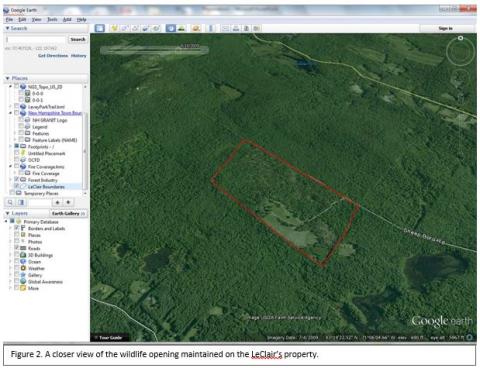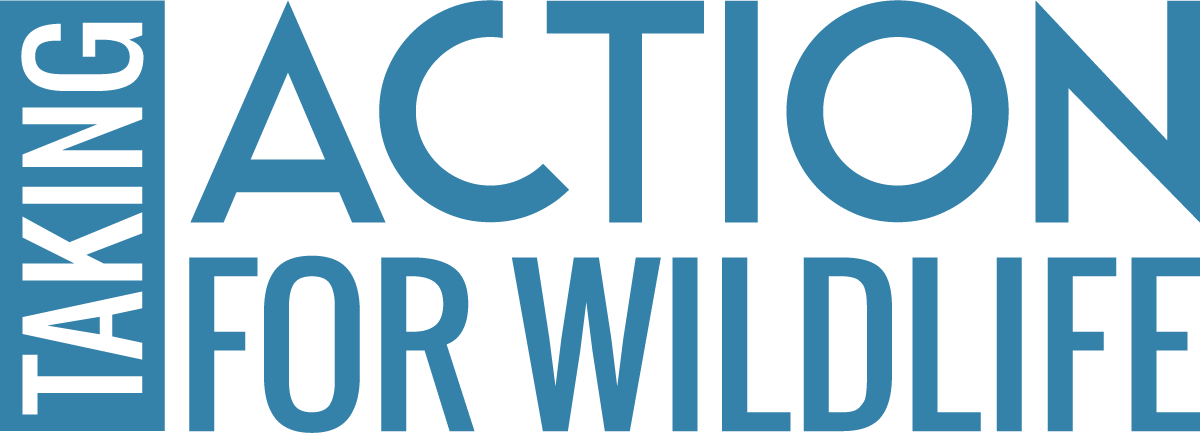Making Habitat Happen: A Bird's Eye View
The LeClair Tree Farm: For the past 30 years, Art and Gale LeClair have been putting their dreams into action as they manage their 120 acre woodlot in Farmington, New Hampshire. Much of the LeClair’s home is constructed with wood harvested from their land, and the poorer quality trees that Art removes in thinning operations provide fuel for the wood-fired furnace that heats their home.
Their property also serves as an outdoor classroom for schools and camp groups. Following a management plan and working with natural resource professionals, the LeClair’s have identified goals for their property and have spent countless hours working toward those goals. In addition to improving the quality of the trees they are growing, a primary goal of the LeClair’s is to improve the wildlife habitat throughout their property by providing more food sources, better cover, and more open space in different parts of their woodland.
The harvesting and forest improvement work the LeClair’s have done has had an added benefit of providing a diversity of tree species and a mix of younger trees that enhance the habitat on their property. Their pine and hemlock forests provide both food and shelter for birds and other wildlife. Black-capped chickadees, pine siskins, crossbills and red squirrels feed on the seeds, while branches provide protection from harsh winter weather and from predators. Deer seek the milder, protected areas in these forests to conserve energy in the winter. Healthy, straight, red oak trees in the mixed hardwood areas are encouraged to grow and develop large crowns to fuel good timber production. These vigorous trees also produce robust acorn crops to provide food for the resident deer, bear, and turkeys.
Creating a diversity of habitats helps a variety of wildlife species meet their needs within the landscape. With most of New Hampshire covered in forests, many species that use forest openings and fields are finding it harder to meet their foraging and shelter needs.
Most of New Hampshire (approximately 83%) is forested, and most of our forests have trees somewhere between 70 and 100 years old. Across our landscape, young, re-growing forests are relatively uncommon. This lack of young forests and shrubby/grassy openings has consequences for our wildlife species. According to Good Forestry in the Granite State, 70% of the 250 birds, mammals, reptiles & amphibians that breed in NH use fields, shrublands, or young forest habitats at some time during their life. Sixty wildlife species require these habitats, including: New England cottontail, American woodcock, brown thrasher, and eastern towhee.
In addition to the forest management occurring on the land, Art and Gale are creating and managing fields and open areas to create more habitat types. Figure 1 shows the LeClair property as it was in 2008. As you can see, the LeClair’s property is part of a much larger, predominantly forested habitat block.

In Figure 2, you can see a closer view of the opening that the LeClair’s reestablish every 7 to 10 years. In this heavily forested environment, the LeClair’s opening offers a valuable addition of grasses, forbs, fruiting shrubs and young trees that provide great feeding and cover opportunities that are lacking elsewhere. The opening provides new browse for deer, moose, and rabbits. It also offers cover, nesting and feeding opportunities for song birds and small mammals. With increased numbers of prey species, the open area affords feeding opportunities for a variety of predators including hawks, foxes, and snakes. Art reports numerous sightings of woodcock, ruffed grouse, deer, and wild turkeys utilizing this area.
The LeClair’s mow their fields after July 15th every year to allow young bobolink chicks to fledge from their grassland nests in the adjacent field. In addition to helping wildlife meet their habitat needs, by creating and maintaining these openings, the LeClair’s are able to enjoy beautiful views across their property. We are fortunate to have dedicated stewards like the LeClair’s and others who create healthy productive habitats for our wildlife species.
Check out your own property using Google Earth!
For more information about things you can do to enhance habitat on your own property, visit Making Habitat Happen.


